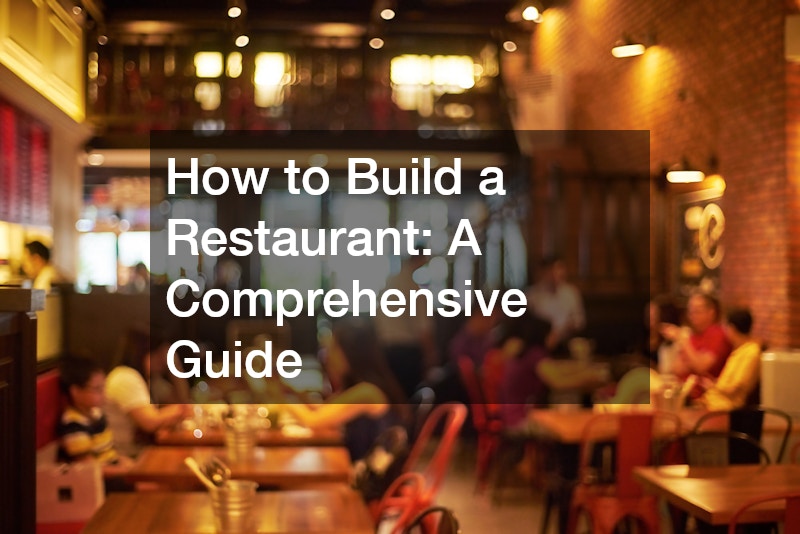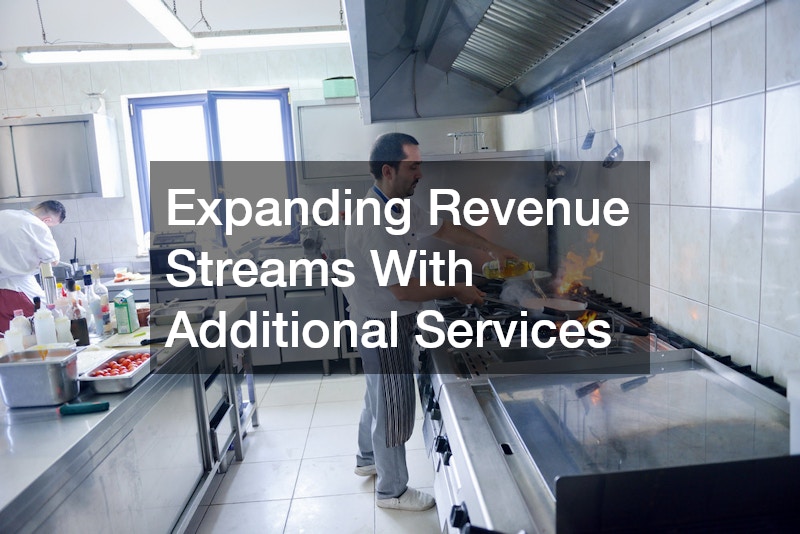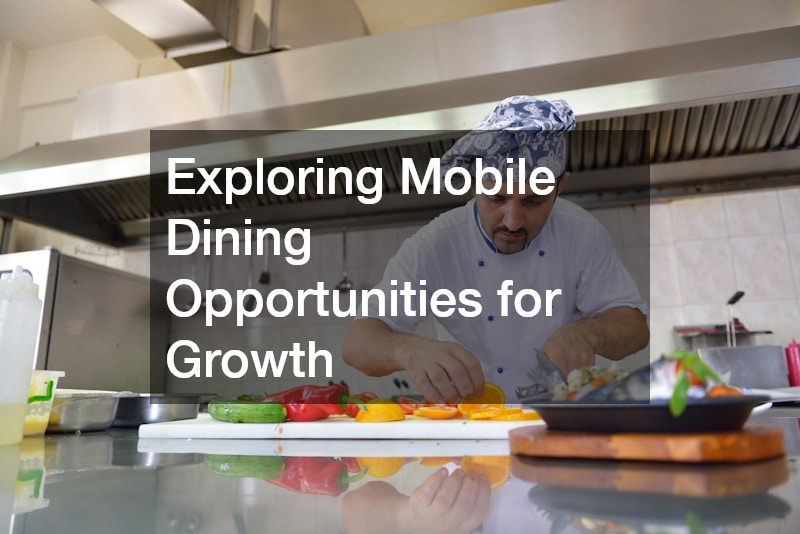Disclaimer: Articles About Food. This site provides food and drink content for informational purposes only.
Opening a restaurant is an ambitious and exciting venture that combines creativity, business strategy, and community engagement. It’s a process that involves far more than just cooking great food; it requires careful planning, strong branding, and smart financial decisions. From choosing a concept to managing construction, every step must be thoughtfully executed to set the foundation for long-term success. The restaurant industry is competitive, and a clear vision is essential for standing out in a crowded market.
Understanding how to build a restaurant means looking at the project holistically. You must consider your target audience, the dining experience you want to create, and the operational systems that will keep everything running smoothly. A well-defined concept, a strategic location, and solid infrastructure are all key components. By breaking the process down step by step, new restaurateurs can transform their vision into a thriving business that attracts loyal customers and sustains growth over time.
Defining Your Concept and Target Market
Before you break ground or design a menu, you need a clear concept that aligns with the audience you want to serve. Your restaurant’s concept will shape nearly every decision you make, from décor and branding to pricing and marketing strategies. It should reflect your unique identity while also meeting a demand in the local market. Whether you envision a fine dining establishment, a casual eatery, or a niche dining experience, your concept is the foundation that will guide every future step.
For example, developing a concept centered around a local seafood restaurant can help you tap into regional culinary traditions and appeal to diners who value fresh, locally sourced ingredients. This type of concept works well in coastal areas where access to quality seafood is abundant. By researching the local market, identifying competitors, and understanding your target customers’ preferences, you can build a concept that resonates and positions your restaurant as a must-visit destination.
Crafting a Unique and Authentic Menu
Once your concept is established, the next crucial step is creating a menu that reflects your vision and appeals to your target audience. A well-crafted menu doesn’t just list dishes; it communicates your brand, showcases your culinary expertise, and creates memorable dining experiences. Your menu should be thoughtfully curated to balance creativity with practicality, ensuring that the kitchen can deliver each item consistently and efficiently. Additionally, the menu plays a major role in determining food costs, kitchen layout, and staffing needs.
For instance, if your vision includes opening an asian food restaurant, your menu should highlight authentic flavors, signature dishes, and perhaps a few creative twists that differentiate your business from competitors. Sourcing quality ingredients, hiring chefs experienced in that cuisine, and designing the menu layout to reflect cultural authenticity will enhance the overall dining experience. This approach not only attracts customers but also helps establish a strong culinary identity, which is a crucial part of how to build a restaurant that stands out.
Expanding Revenue Streams With Additional Services
A successful restaurant often generates income from more than just in-house dining. Diversifying your revenue streams can provide financial stability during slower seasons and help build a loyal customer base. Offering additional services allows you to reach new audiences, create more flexible business models, and make the most of your resources. When planning how to build a restaurant, it’s important to think beyond the dining room and explore ways to expand your offerings strategically.
Providing a catering service is one effective way to boost revenue and increase your restaurant’s visibility. Catering allows you to bring your food directly to customers for events, parties, and corporate functions, giving people a chance to experience your menu in different settings. It can also create opportunities for repeat business and word-of-mouth referrals. By developing catering packages that align with your concept and operational capacity, you can add a profitable dimension to your restaurant business.
Designing an Inviting and Memorable Atmosphere
The atmosphere of a restaurant is just as important as the food when it comes to attracting and retaining customers. A thoughtfully designed space sets the tone for the dining experience, influences how guests feel when they walk through the door, and can even affect how long they stay. Elements like lighting, furniture, music, and décor should work together cohesively to reflect your concept and make guests feel welcome. A great atmosphere can turn first-time visitors into regulars and encourage word-of-mouth promotion.
For example, designing a space inspired by a waterfront bar can create a relaxed and memorable dining experience. Using natural textures, warm lighting, and open layouts can evoke a sense of leisure and escape, making guests feel like they’re on vacation even if they’re close to home. Strategic design choices can also enhance branding, helping your restaurant stand out in a competitive market. Incorporating ambiance planning into your approach is a key step in how to build a restaurant that leaves a lasting impression.
Selecting the Perfect Location for Your Business
Location is one of the most critical factors in determining a restaurant’s success. The right spot can drive foot traffic, attract your target audience, and make your business more visible. When evaluating potential locations, consider factors like demographics, nearby businesses, accessibility, parking, and competition. A well-chosen location should align with your concept and support both your short-term launch and long-term growth goals. Without the right location, even the best concept and menu can struggle to gain traction.
For instance, if you’re opening a local mexican restaurant, choosing a vibrant, high-traffic area with a diverse customer base can help you attract both locals and tourists. Being near shopping districts, entertainment hubs, or residential neighborhoods can give you a built-in stream of potential customers. It’s also wise to assess future development plans in the area to ensure your location has room for growth. Selecting the right site is one of the most strategic steps in how to build a restaurant that thrives over time.
Creating an Irresistible Dessert Experience
Desserts can play a surprisingly important role in shaping a restaurant’s reputation and boosting its revenue. A standout dessert menu gives customers one more reason to stay longer, spend more, and return in the future. Offering unique or indulgent desserts can also create strong word-of-mouth buzz, especially in the age of social media, where visually appealing treats often get shared widely. When planning how to build a restaurant, incorporating dessert options thoughtfully can help enhance the overall dining experience and strengthen your brand identity.
For example, adding an ice cream shop component within your restaurant can set you apart from competitors. Whether it’s artisanal flavors, seasonal specials, or creative sundaes, offering fresh, house-made ice cream can attract families, younger diners, and dessert enthusiasts alike. It can also provide opportunities for take-home sales and expand your customer base beyond traditional dining hours. A carefully crafted dessert program gives your business an additional edge and can contribute significantly to customer loyalty and increased profits.
Exploring Mobile Dining Opportunities for Growth
Restaurants don’t have to be limited to a single physical location. Mobile dining options have grown rapidly in popularity, allowing businesses to reach new audiences and test markets without the commitment of a traditional storefront. This flexibility can help increase brand awareness, generate additional revenue streams, and build excitement around your restaurant. When considering how to build a restaurant, incorporating mobile strategies can give your business more versatility and resilience.
Food trucks are a prime example of how mobility can benefit a growing restaurant brand. Launching a truck with a focused menu allows you to participate in festivals, events, and high-traffic areas while keeping overhead costs relatively low. It can also serve as a marketing tool to promote your main location or as a testing ground for new menu items and concepts. By strategically using mobile dining to complement your restaurant, you can expand your reach and strengthen your overall business model.
Addressing Essential Infrastructure and Utilities
Behind every great restaurant is a solid infrastructure that supports daily operations. Reliable utilities and functional systems are critical for keeping your business running smoothly. From water supply and electrical systems to HVAC and waste management, every element must work efficiently to meet health codes and create a safe environment for staff and customers. Overlooking these details during planning can lead to costly disruptions and delays after opening. A strong infrastructure plan is a key component of how to build a restaurant that operates seamlessly.
Plumbing repair is one of the most important aspects to address early in the construction process. A restaurant’s plumbing system must handle high volumes of water for cooking, cleaning, and sanitation. Any issues with drainage, leaks, or water pressure can lead to operational headaches and potential health code violations. By investing in quality plumbing installation and having reliable repair plans in place, you can avoid unexpected downtime and ensure your kitchen functions efficiently from day one. Thoughtful utility planning lays the groundwork for smooth, uninterrupted operations.
Ensuring a Safe and Durable Building Structure
A restaurant’s physical structure is more than just walls and a roof—it’s the backbone that supports daily operations, customer safety, and long-term success. A durable and well-maintained building provides peace of mind and helps protect your investment from unexpected damage and costly repairs. Structural issues can disrupt service, damage inventory, and even pose safety risks, so it’s critical to address these concerns during the initial planning and construction stages. When thinking about how to build a restaurant, prioritizing structural integrity is just as important as designing the menu or interior space.
Working with professionals who provide commercial roofing services is an essential step in ensuring the longevity and safety of your building. A high-quality roof protects your restaurant from leaks, weather damage, and insulation issues that can affect both comfort and energy costs. Proper roofing also supports compliance with safety regulations and helps avoid expensive emergencies later. By investing in durable materials and regular inspections, you can safeguard your business against unexpected structural problems, allowing you to focus on operations and growth rather than costly repairs.
Partnering With the Right Professionals for Construction
Building a restaurant involves numerous moving parts, from architectural design and permitting to construction timelines and quality control. Trying to manage every detail alone can quickly become overwhelming, which is why partnering with experienced professionals is crucial. The right team can streamline the construction process, ensure compliance with regulations, and help bring your vision to life efficiently and accurately. Choosing qualified partners is one of the smartest decisions you can make when learning how to build a restaurant successfully.
Hiring a trusted commercial contractor gives you access to expertise that covers everything from site preparation to finishing touches. These professionals coordinate with architects, engineers, and inspectors to keep your project on schedule and within budget. They can also anticipate potential issues before they become costly delays, ensuring that your restaurant opens smoothly. By working with reliable contractors, you create a foundation for a well-built, properly permitted space that supports both immediate operations and future expansions. Strong partnerships in construction can make the difference between a stressful build and a seamless opening.
Building a restaurant is a multifaceted process that requires careful planning, strategic decision-making, and attention to detail. It’s not just about great food; it’s about creating a complete experience that resonates with customers and operates efficiently behind the scenes. From defining your concept and crafting a unique menu to ensuring proper infrastructure and construction, each step plays a vital role in shaping your restaurant’s future. Understanding how to build a restaurant means recognizing that success depends on both the creative and practical sides of the business.
The process begins with a clear vision—defining your target market, selecting the perfect location, and designing an inviting atmosphere that reflects your brand. It continues with smart operational choices, such as diversifying revenue streams, exploring mobile opportunities, and prioritizing reliable utilities. Dessert programs, food trucks, and catering services can all help broaden your reach and attract different audiences. Meanwhile, focusing on the physical structure—like plumbing, roofing, and professional construction partnerships—ensures your business is built to last.
Equally important is recognizing that no single decision exists in isolation. Each element, from menu design to safety infrastructure, works together to create a cohesive business model. A well-thought-out strategy will help you avoid common pitfalls, control costs, and establish a restaurant that can grow sustainably over time. With the right planning, your vision can transform from an idea on paper to a thriving dining destination that customers love and remember.
Ultimately, learning how to build a restaurant is about balancing passion with practicality. It’s about bringing culinary creativity to life while managing the logistical and operational realities of running a business. By approaching each step thoughtfully and intentionally, you can set the stage for a successful launch and a lasting presence in the restaurant industry. Whether you’re opening a cozy neighborhood spot or a bold new concept, the right foundation can turn your dream into a thriving reality.




